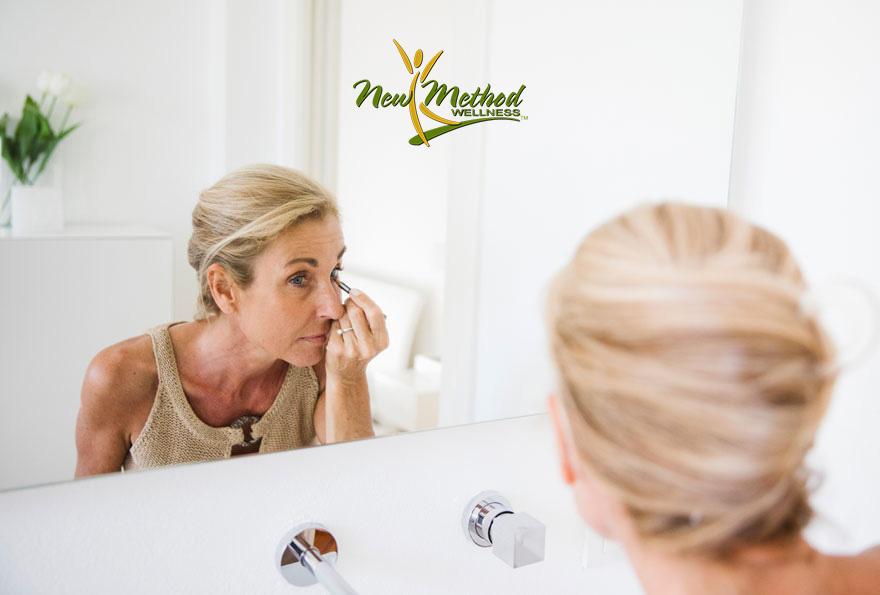When you hear “body image” and “eating disorder,” the first image that pops into your mind is usually that of a teenager or young woman in her 20’s struggling with anorexia nervosa, bulimia nervosa, bingeing, or bulimarexia. However, younger women are not the only ones who are subject to negative body image and low self-esteem. Although there is limited research on middle-aged and older women with regard to body dissatisfaction, aging and disordered eating (Hofmeier, Runfola, Sala, Gagne, Brownley & Bulik, 2017), the prevalence of obesity and growing concern with eating disorders for older women (Hofmeier et al., 2017) should draw our attention to our loved ones who may possibly struggle with substance abuse and body image issues behind closed doors.
The National Eating Disorders Association (NEDA) presents some disturbing statistics about today’s adult women facing negative body image:
• Body image dissatisfaction in midlife has jumped from 25% in 1972 to 56% in 1997
• Studies have found comparable levels of dieting and eating disorders across age groups
• About 90% of adult women worry about their weight; large percentages (up to 40% to 50%) are restrained eaters, overeaters, and others whose eating is “devoid of pleasure”
Stop Comparing Yourself to Other Women!
Women are notorious for comparing themselves to other women, and the media is no help at all when it comes to making them feel better about their body weight. Research shows that those who regularly compare themselves to others and to the thin-ideal size as portrayed by the media are at greater risk for body dissatisfaction. In a study published in the Journal of Women and Aging (2013), 1,789 women (age 50 and older) participated in a survey about their body image and body size satisfaction. Only 12.2% reported satisfaction with their body image.
Looking at Factors Beyond Fashion Mags and Media
Societal expectations of what women ought to look like at age 25, 35, 45 and above change with age. Body image issues for older women are more complex than those for younger women (Kilpela, Becker, Wesley & Stewart, 2015). Influential factors that tip the scales in favor of desire for control through eating disorders and substance abuse may include the following:
• Face weight/shape changes associated with changing health conditions and medication
• Shift of body fat distribution towards the torso
• Changes in hair appearance (e.g., thinning, graying, texture, etc.)
• Changing in skin coloration, elasticity, and firmness
• Fertility or infertility
• Competition with younger women
• Life’s stressors (divorce, elder care, work-life balance, grief over loss, etc.)
The Need for Control
Borne out of the desire to control one’s weight in order to augment one’s sense of self-esteem, women resort to controlling one’s diet, but when the reward for exertion of control (i.e., the ideal body weight and image) dominates one’s existence, that’s when it becomes pathological, according to an article published in Psychology Today.
The media messages that women receive today only feed the monstrous need for perfection in order to feel desirable, worthy, and valued. Grieving the loss of one’s youth, older women turn to cosmetic surgery in addition to drug and alcohol abuse to try to turn back the hands of time. Depression, anxiety and other affective disorders either contribute to or result from poor dieting, which further complicates the problem of prescription drug abuse and alcoholism.
Common Eating Disorders Associated with Substance Abuse
Adult women and older adults do not readily admit that they may have an eating disorder, since this is typically associated with younger adults, but when clients come in to seek addiction treatment for a substance use disorder or alcohol use disorder, addiction professionals almost always discover an eating disorder associated with their clients’ substance abuse addiction. Psychology Today cites the National Center on Addiction and Substance Abuse (CASA), reporting that up to one-half of those with eating disorders also have a substance abuse addiction, compared to 9% of the general population.
Among common eating disorders like bulimia nervosa and anorexia nervosa, Binge Eating Disorder (BED) is more prevalent among adults and is associated with higher risk for obesity (Grilo, Sinha & O’Malley, 2002). Characterized by frequent and recurrent episodes of binge eating (excessive consumption of food in a very short amount of time) over a six-month period, BED exists in 3% of the adult population and 8% of obese persons. There is a strong correlation between BED and the feeling of loss of control (Grilo et al., 2002).
Kill Two Birds with One Stone
The comorbidity of substance use disorders and eating disorders is the reason why we need dual diagnosis treatment. New Method Wellness, one of the nation’s best treatment centers for drug and alcohol addiction, specializes in treating co-occurring disorders associated with substance abuse. Integrating evidence-based clinical care with a wide array of holistic treatment modalities, New Method Wellness delivers high-quality client-centered care. Our unique 2:1 staff-to-client ratio ensures great success rates, as evidenced by our client testimonials and recognition by public figures like Dr. Phil.
Grilo, C., Sinha, R., O’Malley, S. (2002). Eating Disorders and Alcohol Use Disorders. National Institute on Alcohol and Abuse and Alcoholism. Retrieved from https://pubs.niaaa.nih.gov/
For more information about our holistic programs, call 866.951.1824 today!







